PHOTOMICROGRAPHS
WHAT YOU NEED TO KNOW ABOUT PHOTO MICROGRAPHS AND JUDGING DIAMOND CLARITY ON THE INTERNET
Clarity, while important to learn about via the general information by GIA on the previous page, happens to be one of the most neglected pieces of information shared with consumers on the web.
At best "facet plots" of diamonds are shared via lab Reports like GIA, AGS, EGL, IGI, etc. representing the imperfections, therefore the clarity that exists in the diamond. Those facet plots on the reports look like this. This one below is an example of an SI2 clarity containing 4 different types of imperfections listed below in it's legend.
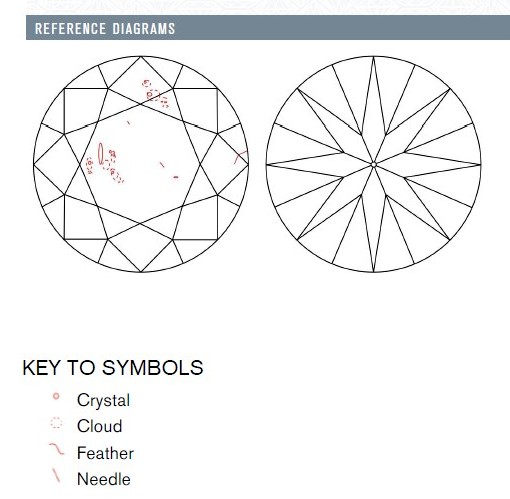
While this is helpful there are a ton of questions surrounding the clarity of a diamond that is not answered with a simple line art drawing. Questions like...
- What color(s) are these imperfections black or white?
- If dark, are those particular ones in the middle or on the side?
- Are the feathers parallel or perpendicular to the table facet thus affecting their relief in the diamond?
- Do white inclusions reflect back as dark to the observer or are they white or better yet transparent?
- Do the feathers breach the surface of the girdle or crown thus compromising the diamonds structural integrity?
- Are the clouds so condensed that they impact transparency in any way?
You get the idea.
On the web more and more photography, as well as video, is being offered on diamonds which we think is a great thing of course. Any attempt to help the consumer make a more educated decision we see as a plus. When it comes to clarity in diamonds, there are aspects which are discernible as well as un-discernable when it comes to the actual clarity. The clarity of the diamond is graded in the labs under a gemological microscope featuring dark field illumination. Darkfield illumination is lighting within the well of the microscope that literally "lights up" the interior of a diamond from underneath making the conditions perfect for accurately grading the clarity. It is under these conditions in which we do our photomicrographs.
Here is the photomicrograph of the diamond featured in that plot.
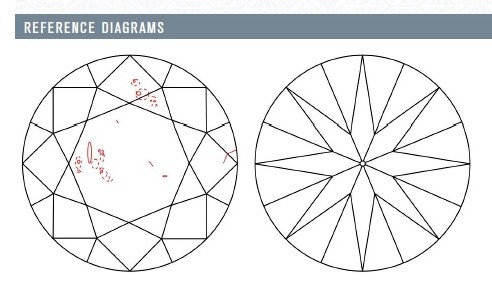
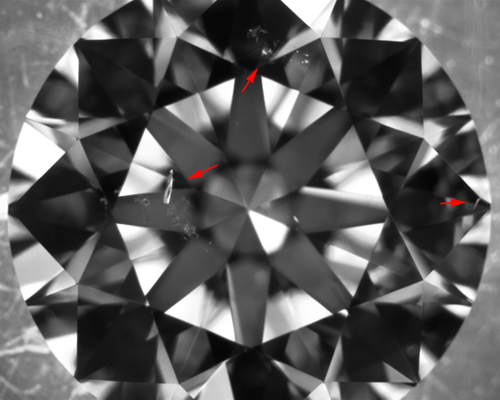
This answers a lot of questions.
- There are no dark or colored inclusions. They are all white and transparent.
- The grade setting inclusion happens to be the needle under the table which is a transparent crystal.
- The feather on the side at 3:00 which we personally ensured does not breach the surface.
- The clouds are not so condensed, thus impacting transparency and are completely eye clean.
- The tiny crystals are off to the side and transparent as well.
This turned out to be a good one! This kind of assessment is impossible without acquiring the diamond, providing genuine photomicrographs (which we also include in our exclusive Appraisal Reports) and giving it a thorough gemological inspection.
Here is an example of a pinpoint inclusion we photographed in a VVS2 clarity diamond under darkfield illumination (not always easy to do).
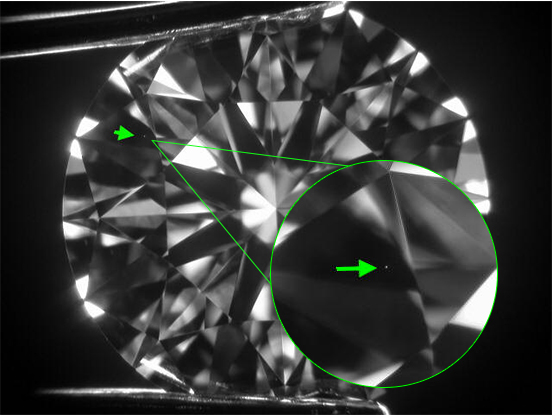
Note how easy it is to see that little pin point. Compare that with images taken on the web to represent clarity, which while magnified do not accurately accomplish the job of truly demonstrating the actual clarity of the diamond. Images with overhead lighting akin to these are being offered which, while helpful do not translate into actual photo micro-graphs designed to show clarity. Each of the diamonds below are taken with overhead lighting and of SI2 clarity diamonds.
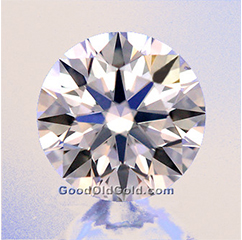
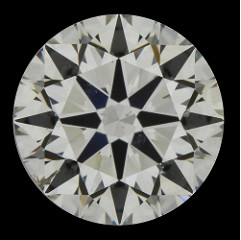
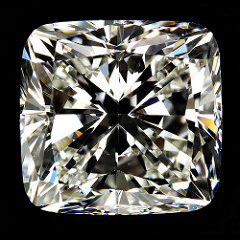
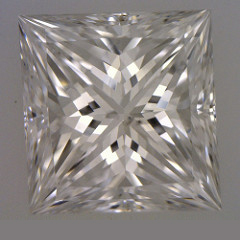
You see when it comes to examining clarity, overhead lighting is not effective. Even under a microscope it isn't! Note the actual photo micrograph below taken of another SI2 clarity diamond that features inclusions called twinning wisps. This first photo is taken with dark-field illumination under a GIA gemological microscope.
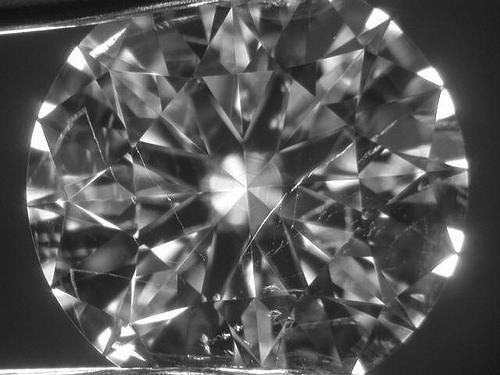
Here is the same exact diamond taken under the same microscope but with overhead lighting instead of darkfield illumination. HUGE difference.
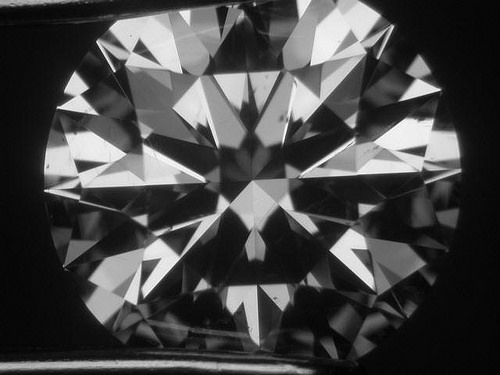
Amazing huh. We can't emphasize enough the value of actual photomicrographs. While a GIA Report can show you the size and position of imperfections, they can not show you their color, relief, and nature in the same way actual photomicrographs can.
Since we offer an exclusive service of taking actual photomicrographs of diamonds under darkfield illumination on each of the diamonds we acquire for stock and for clients you will have a unique advantage of being able to see what
it is that constitutes the clarity grade of any diamond you are considering with us.
Even if you are just visiting our site to learn about diamonds the resources you will find here and on our individual diamonds will give you an idea of the plethora of options you can see/find within each clarity grade. In the
following chapters I want to give you some brief, yet very practical advice concerning the clarity grades and what I do and don't recommend to consumers.
Now that you know the importance of photomicrographs taken with darkfield illumination, let's check some out as we explore the FL and IF clarity grades.
- FL and IF Clarity Grades
